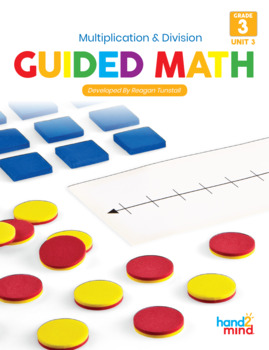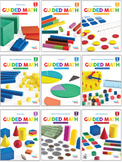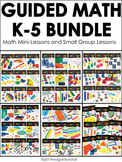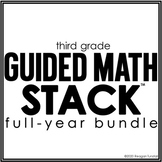Guided Math 3rd Grade Multiplication and Division Concepts and Models Unit 3
- Zip
What educators are saying
Also included in
- Guided Math Whole Group and Teacher-Led Small Group Lessons for Third GradeDownload the Free Standards-Alignment for Guided MathThe entire year of math lessons aligned to standards is waiting for you. Whole group math lessons followed up with the teacher-led small group and all materials.Who Is ThisPrice $80.00Original Price $148.50Save $68.50
- This is a bundle of Guided Math Bundles. Each grade-level bundle contains 180 standards-aligned math mini-lessons and small group lessons with all accompanying materials. Guided Math Whole Group and Small Group Lessons Download the Free Standards-Alignment for Guided Math for each grade level WhoPrice $825.00Original Price $966.00Save $141.00
- This comprehensive STACK bundle equips teacher with all of the resources to run the guided math block!This resource is the ALL-IN-ONE Mega Bundle to run the Guided Math STACK structure in your classroom. It has all of the different bundles for the entire year for all of the components. You can alsoPrice $185.00Original Price $430.50Save $245.50
Description
Guided Math Whole Group and Teacher-Led Small Group Lessons for Third Grade
Download the Free Standards-Alignment for Guided Math
Multiplication and Division Unit Focus
This unit focuses on third grade multiplication and division concepts, using various representations to model problems such as strip diagrams, arrays, equal groups, number lines, repeated addition and repeated subtraction. Students will be exposed to numerous word problems and gain insight into examining problems to determine what operation should be used.
Who Is This Designed For
This resource is for any general ed. teacher, instructional coach, special education classroom, or math intervention time teacher. Stay organized, on track, and ready for your math instruction every day of the school year.
Included in Every Unit
Standards-alignment
Unit Pre-Assessment
Math Warm-Ups
20 Guided Math Lessons, including Whole Group and Teacher-Led Small Group
Materials for All Lessons
End of Unit Assessment
Answer Keys
Bonus Materials Included
Spanish Supplement for every unit (all student materials have been translated).
Every Lesson Contains
Essential Question
Lesson Objective
Whole Group Math Mini-Lesson
Guiding Discussion Questions
Teacher-Led Small Group Lesson
General differentiation for remediation, on-level, and enrichment
Teaching materials
Student materials
Other Units for 3rd Grade Guided Math
Guided Math Third Addition and Subtraction
Guided Math Third Multiplication and Division Concepts and Models
Guided Math Third Multiplication and Division Problem Solving
Guided Math Third Grade Measurement, Perimeter, Area, and Elapsed Time
Guided Math Third Grade Fractions
Guided Math Third Grade Geometry
Guided Math Third Grade Graphs and Finance
Guided Math Third Grade Spiral Review Test Prep
3rd Grade Student Workstations that Pair with Guided Math
Math Journals for the Year
Stations by Standard Math Workstations for the Year
Standard Practice Skill Pages for the Year
Digital Guided Math Technology eLessons for the year
All 9 Units Cover the Math Standards for third grade Common Core and Texas Teks. Find the free alignment here.
Hundreds of schools and districts use Guided Math for their main or supplemental math curriculum. Information about Guided Math for schools and districts here.
For Guided Math Professional Development, inquire here.
Purchasing for a school or district? We offer direct invoicing email reagan.tunstall@gmail.com
Keep Informed on your favorite socials by following
Tunstall's Teaching Tidbits Website
Thank You,
Reagan Tunstall
Tunstall's Teaching Tidbits








